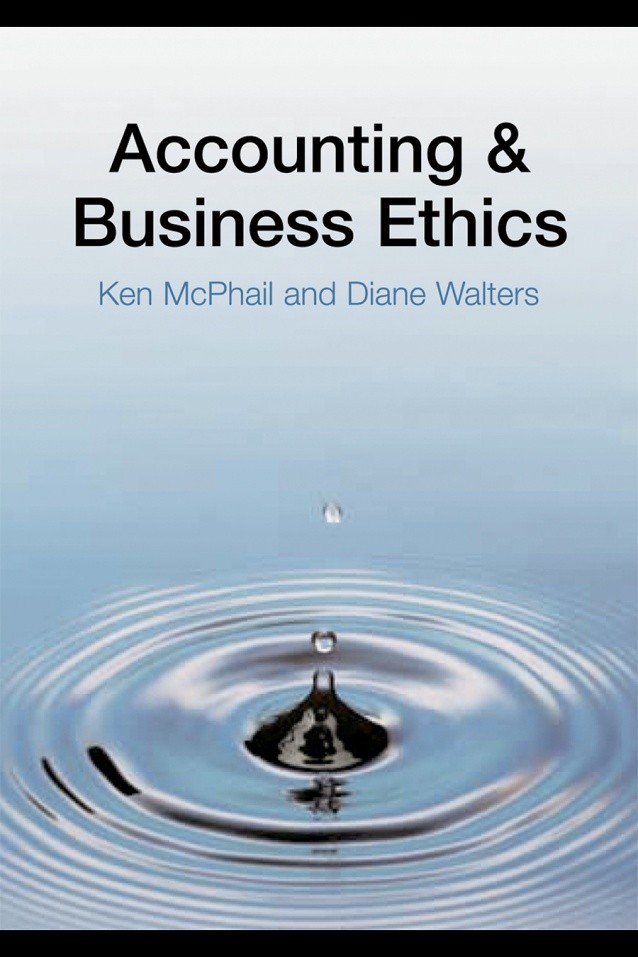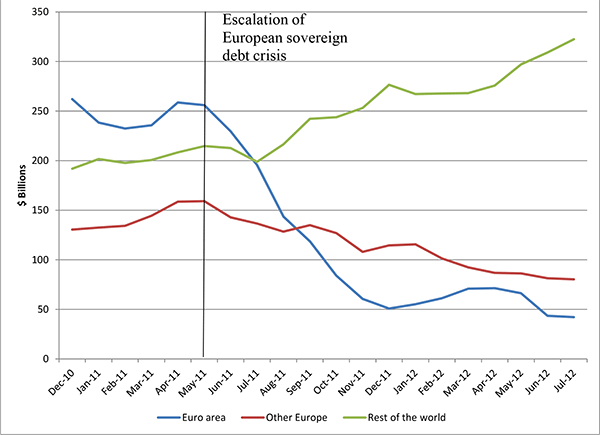Money Market Funds An Introduction to the Literature
Post on: 3 Июнь, 2015 No Comment

Money Market Funds:
An Introduction to the Literature
Viktoria Baklanova,∗ CFA, PRM
PhD Candidate
January 2010
∗ Viktoria Baklanova is currently employed as an analyst by Fitch Ratings. The views and opinions expressed in this
article are those of Ms. Baklanova and are not intended to, and do not represent, the opinions, views or policies of
This article provides an overview of the literature on various
aspects of the money market fund industry. It also serves as an
introduction to a much larger research project on comparative
regulation in the context of the global money market and cash
management. The study of a relationship between MMFs and an
efficient global financial market is in its early stages. Here we
provide just a glimpse of the major driving forces behind the
MMFs popularity.
The article examines studies related to funds’ investment
management practices, but also explores a number of issues raised
by the emerging money market fund industry under the securities
and banking laws in the U.S. and Europe. An open question is
whether the MMFs will continue to play an important role as one
of the major cash management vehicles and a source of financing
given certain structural deficiencies and unresolved regulatory
issues. We hope that our further research will help to better
understand the role of money market funds in more efficient
functioning of the global financial markets and capital formation.
Introduction
Prior to the events of the financial crisis unfolding since July 2007, there was surprisingly
little systematic research on money market funds (“MMF”). No established schools or research
traditions existed on the subject. Instead, there were a relatively small number of unrelated
empirical studies conducted by finance scholars and professionals with an almost exclusive focus
on the U.S. market. The main objective of these studies was to test market efficiency and the
rational expectations hypothesis as it applied to money markets. In addition, there were several
descriptive articles on legislative debates and money market regulations produced by practicing
attorney and ex-regulators. All this does not amount to any established legal theory or
hypotheses that would have been tested by different methods and in different markets.
However, the financial market crisis of 2007 – 2009 exposed MMFs as one of the major
factors of global systemic risk and prompted various regulators to focus on the subject of MMF
Page 3
ssrn.com/abstract=1542983
regulation.1 Today analysis of money market funds and policy recommendations are among the
most commented subjects of legal research in financial market regulation. In our quest for a
better understanding of the driving force behind an explosive growth of money market funds
over the last forty years, we turned to historical essays written by those who evidenced the birth
of the money market funds industry. In addition, we studied works of market practitioners to
establish whether the correlation exists between the strength of money funds regulations and
market efficiency.
While money market funds are predominantly the U.S. phenomenon,2 we observed an
increase in a number of recent studies on money market funds operating in the financial markets
outside of the U.S.3 Literature on the non-U.S.-domiciled funds is reviewed in the last section of
1 On June 16, 2009, President Obama announced a comprehensive regulatory reform plan to modernize and protect
the integrity of the U.S. financial system. The white paper titled “Financial Regulatory Reform – A New
Foundation: Building Financial Supervision and Regulation,” contained recommendations for the SEC to
“… move forward with its plans to strengthen the regulatory framework around MMFs to reduce the credit
and liquidity risk profile of individual MMFs and to make the MMF industry as a whole less susceptible to
runs. The President’s Working Group on Financial Markets should prepare a report assessing whether more
fundamental changes are necessary to further reduce the MMF industry’s susceptibility to runs…”
www.financialstability.gov/docs/regs/FinalReport_web.pdf accessed on November 2,
2009.
2 According to “Worldwide Mutual Fund Assets and Flow” quarterly report by the Investment Company
Institute (ICI), the national association of U.S. mutual funds and other investment companies, at the end of the
first quarter of 2009, the assets under management of money market funds globally were $5.8 trillion
including assets under management of the U.S.-registered money market funds, which accounted for $3.9
www.ici.org/research/stats/worldwide/ww_03_09
accessed on October 31, 2009.
3 See, e.g. STEPHAN JANK, MICHAEL WEDOW, Sturm und Drang in Money Market Funds: When Money
Market Funds Cease to be Narrow, Deutsche Bundesbank: Discussion Paper Series 2: Banking and
Financial Studies, (2008). (study of German money market funds), KAUKO KARLO, The Demand for
Money Market Mutual Funds, 14 Bank of Finland Research Discussion Papers, (2005). (study of Finnish
money market funds), MAGNUS DAHLQUIST, STEFAN ENGSTROM, PAUL SODERLIND, Performance and
Characteristics of Swedish Mutual Funds, 35(3) Journal of Financial and Quantitative Analysis (2000).
Page 4
this article. Though the studies on MMFs are constantly growing, the amount of research
explaining the growth phenomenon and the risks associated with such growth are still
inadequate. The goal of our subsequent studies is to fill this gap.
MMFs as a subject of financial research
Earlier literature on MMFs was mainly produced by financial scholars concerned with
various aspects of portfolio management and corporate governance.4 Kane et al. (1983) studied
relationship between the interest rate forecasting ability of a portfolio management team and the
economic success of money market funds. The authors used a sample of thirty four funds and
found no strong correlation. Similarly, Domian (1992) concluded that MMF’s duration is merely
a reflection of past changes in the level of interest rate rather than ‘a window to the future.’5
Finally, DeGennaro et al. (1996) inferred that the benefits of active MMF portfolio management
are not detectable in the fund return data. The authors concluded that MMF managers in general
are unable to add value by adjusting the duration of a fund portfolio in order to capitalize on
anticipated changes in interest rates.
Over the years, a small army of finance scholars was engaged in finding a Holy Grail of

excess return in mutual funds. Domian et al. (1997) found that a MMFs’ return is highly
correlated with the fund’s expense ratio. From 1990 to 1994 the authors studied various factors
affecting the cross section of net returns on MMFs and the persistence of the funds relative
returns. The study concluded that the funds produced similar gross returns and that the
(study of Swedish mutual funds performance persistency including characteristics driving performance of
money market funds).
4 See e.g. ANDREW B. LYON, Money Market Funds and Shareholder Dilution, 39 Journal of Finance 1011, 1020,
(1984). (Analyzed the effects of amortized cost valuation on institutional MMFs and found the possibility of
arbitrage between securities priced at market value and amortized cost, which resulted in dilution of value for
MMFs’ investors).
5 DALE L. DOMIAN, Money Market Mutual Fund Maturity and Interest Rates 24 (4) Journal of Money, Credit and
Banking, (1992). at 526.
Page 5
differences in net returns were largely driven by differences in expenses6 and the funds’ policy
regarding investments in commercial paper (CP).7 In other words, an ability to invest in CP
serves as a proxy for an ability of a fund to invest in risky securities, i.e. CPs are issued by
corporations that are subject to credit risk. The authors divided MMFs in two broad groups: those
investing exclusively in government securities and those investing in commercial paper and other
assets.8 MMF professionals labeled the first group accordingly as “government funds” and the
second “prime funds.” Within both groups MMFs had a limited ability to differentiate
themselves amongst their peers, leading to commoditization of the product. Over time, the
inability to differentiate led to a high degree of concentration of the MMF industry.9
Christoffersen et al. (2002) examined whether funds with different levels of expense
ratios can co-exist in the competitive market. The authors found that MMFs portfolios normally
consist of a number of share classes,10 each carrying a different expense ratio. Trying to explain
6 Operations of a mutual fund incur certain costs. These are regular fund operating costs, such as investment
advisory fees, marketing and distribution expenses, brokerage, custodial, transfer agency, legal, and accountants’
fees. In addition, costs might be incurred in connection with particular investor transactions, such as investor
purchases, exchanges, and redemptions. Total sum of those costs paid by a fund investor is refereed as “fund’s
expenses” or “fund’s expense ratio.” Explanation of mutual fund expenses is available at the SEC web-site at
www.sec.gov/answers/mffees.htm#management.
7 The glossary of statistical terms maintained by the Organization for Economic Cooperation and Development
(OECD) contains the following definition of CP: CP is an unsecured promise to pay a certain amount on a stated
maturity date, issued in bearer form. CP enables corporations to raise short-term funds directly from end investors
through their own in-house CP sales team or via arranged placing through bank dealers. Available at
stats.oecd.org/glossary/detail.asp?ID=6054 accessed on November 1, 2009.
8 DALE L. DOMIAN, WILLIAM REICHENSTEIN Returns From Investing in Money Market Funds, 1990 to 1994, 6
Financial Services Review, (1997). at 169.
9 According to the Investment Company Institute (ICI), as of September 30, 2009 U.S.-registered money market
mutual funds had $3.4 billion in total assets under management. CraneData’s “Money Fund Intelligence” reported in
its October 2009 issue that approximately 95% of those assets was managed by only 25 mutual fund advisors.
10 The SEC web-site contains the following explanation of mutual fund share classes:
“Known as multi-class funds, some mutual funds offer investors different types of shares, known as
classes. Each class will invest in the same pool (or investment portfolio) of securities and will have the














